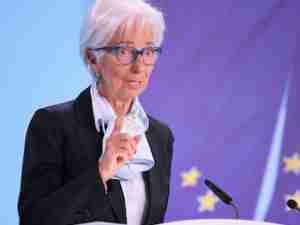Iron Ore in Free Fall as Port Holdings Expand, Trade Frenzy Ebbs
By: Jasmine Ng | May 09 2016 at 07:16 AM | International Trade
Iron ore’s in free fall. Prices plummeted as port stockpiles in China expanded to the highest level in more than a year following moves by local authorities to quell frenzied speculation in raw-material futures.
Ore with 62 percent content delivered to Qingdao tumbled 5.7 percent to $54.99 a dry metric ton, according to Metal Bulletin Ltd. Prices have slumped 22 percent since peaking at more than $70 on April 21, and Monday’s drop follows a 12 percent loss last week, which was the most since 2011. Miners’ shares fell, with Rio Tinto Group losing as much as much 5.2 percent in London.
Iron ore is falling back to Earth after a dramatic surge of speculation in China had helped to hoist benchmark prices to the highest in 15 months. The mania prompted regulatory authorities and exchanges to team up to quell the excesses, while banks including Brazil’s Itau Unibanco Holding SA warned the price gains weren’t justified in an oversupplied market. Data on Friday showed port holdings have expanded to almost 100 million tons.
“The recent price spike was well above the levels supported by market fundamentals,” said Gerard Burg, senior Asia economist at National Australia Bank Ltd. in Melbourne. “Stocks have been steadily rising, given the rebound in imports. This highlights again that the market isn’t that strong, and the price spike was excessive.”
Iron ore’s slump on Monday was preceded by losses in Singapore and Dalian futures. The SGX AsiaClear contract for June settlement slid as much as 9.4 percent and futures in Dalian dropped 7.1 percent, retreating alongside contracts for steel reinforcement bar and coking coal.
Inventories held at ports across China increased 1.4 percent to 99.85 million tons last week to the highest since March 2015, according to data from Shanghai Steelhome Information Technology Co. The holdings, which supply the world’s largest steel industry, have expanded 7.3 percent this year.
Cargoes from Australia’s Port Hedland will probably rise in the coming months as the Roy Hill mine backed by billionaire Gina Rinehart ramps up, Goldman Sachs Group Inc. said in a note received Monday, referring to the world’s largest bulk-export terminal. Iron ore’s outlook over the longer term is negative as the rally has helped higher-cost miners gain greater resilience in the face of oversupply, the bank said.
Exchanges in China including Dalian last month hiked fees, cut hours and boosted margins in raw-material futures to roll back the trading fervor. While iron ore demand was seen as relatively strong, even more measures may be in the offing, according to Daniel Hynes, senior commodity strategist at Australia & New Zealand Banking Group Ltd. in Sydney.
“The combination of a rise in port inventories in China, and rumors of further curbs,” said Hynes. “Iron ore demand is relatively strong. There continues to be signs that construction activity in the Chinese housing market is improving and steel producers have low inventories.”
